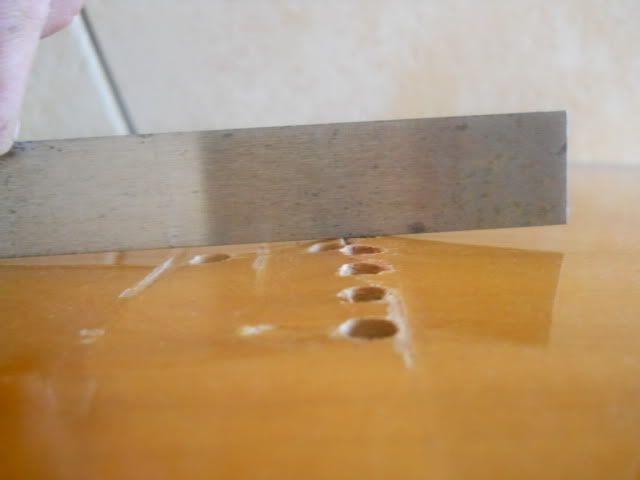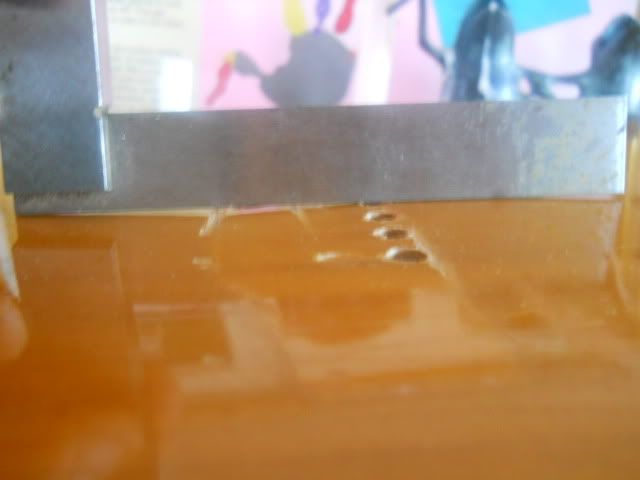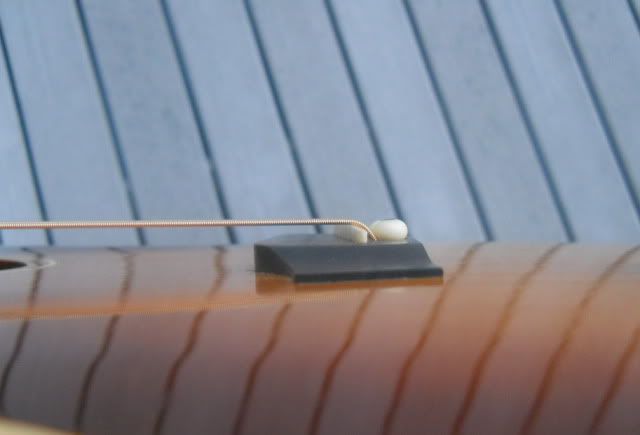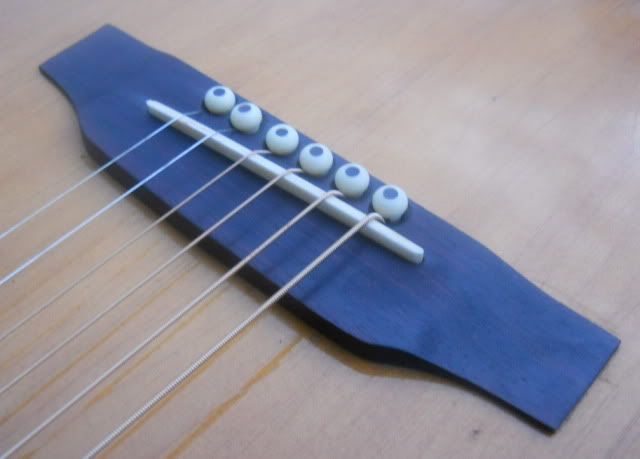
 |
|
#1
|
||||
|
||||
|
I don't do tons of repair work on other than parlor guitars but allot of that work is on various Gibson LG models from the 40's thru the mid-60's. A popular job is to change out the original plastic LG bridge on many of the 60's vintage guitars for a rosewood or ebony bridge. I've done quite a few and I must say the tonal difference is always amazing.
A request to swap out plastic for rosewood often means addressing a failed bridge plate first. These LG bridge plates were wide, long and made of softwoods. Many just could not hold up to the riggers of string tension over time and stopped doing their job. A straight edge across the bridge area of this early 60's LG1 tells the story. It's easy to see how hard it would be to setup this guitar with a new bridge without first address the "hump". The "hump" around a bridge can be the result of many factors but this one is a failed bridge plate.  On this particular LG, the problem could be addressed with a brazilian ebony overlay, rather than a complete bridge plate replacement. The new overlay is positioned mid way between either side of the bridge pin holes and extends a bit toward the end block. After a night under pressure and with the new overlay glued underneath, the "hump" has been flattened enough to allow for the installation of the new bridge. The overlay also affords the string end balls to seat properly in the newly reamed bridge pin holes.  A new bridge is shaped to fit the top of each guitar. I've still got some saddle work to do on this gal before she's 100% finished.  The failed bridge plate is no more. The new rosewood bridge looks good and the guitar sounds great. That's good news. 
__________________
VintageParlorGuitars.com Fresh inventory just added, click link at left to view |
|
#2
|
|||
|
|||
|
Interesting stuff.
Your love of old guitars and your craft comes shining through. 
__________________
Yours truly, Dave Morefield A veteran is someone who at one point in his or her life wrote a blank check made payable to 'The United States of America' for an amount of 'up to and including my life.' |
|
#3
|
|||
|
|||
|
Is it safe to assume you sanded off the finish and further flattened the area before gluing?
I've been tempted to try one of these: http://www.stewmac.com/shop/Tools/Sp...y_Reducer.html 
__________________
gits: good and plenty chops: snickers |
|
#4
|
|||
|
|||
|
Nice save!
 But it looks like the bridge was put on backwards?  
|
|
#5
|
|||
|
|||
|
Yeah, I replaced one of these gibson plastic bridges on a hummingbird last summer. I didn't have to contend with the warped bridge plate, though. It was good luck for the guitar that the top was still in great condition, so it was just a removal, make a new bridge, and install.
Goes to show you that just because it is done by a reputable company doesn't mean it is a great idea. Cheers. |
|
#6
|
||||
|
||||
|
I just urged the back off an old Oak Parlor. In looking at the top front and back I noted the top is shot in so many ways inside and out. Loose Ladders, 2 impact crunches, too many cracks Including the name NICK woodburned into the top in a few places. So, the top is going to go on the wall as art. I was musing how all they used for a bridge plate was Rift Sawn Pine.
Nice save Vintage. What is with the Bridge? It does look upside down. |
|
#7
|
|||
|
|||
|
It's called a reverse belly bridge. Many LG's have these as well as many other of their models. I blame Gibson.
 1960 LG1  1950 J45  2011 Hummingbird Last edited by arie; 12-15-2011 at 09:45 AM. |